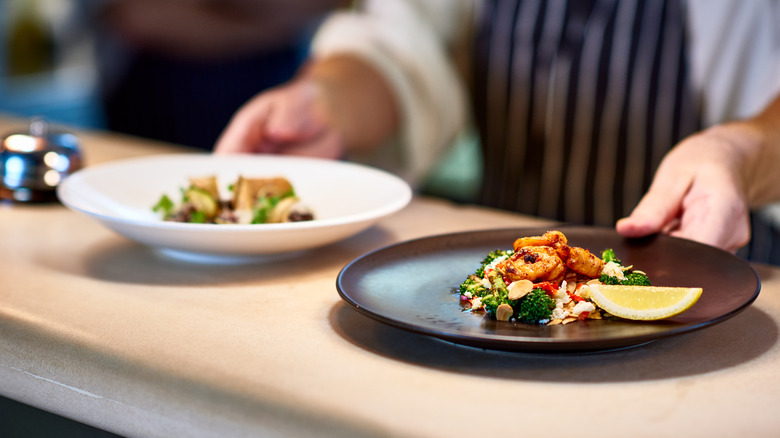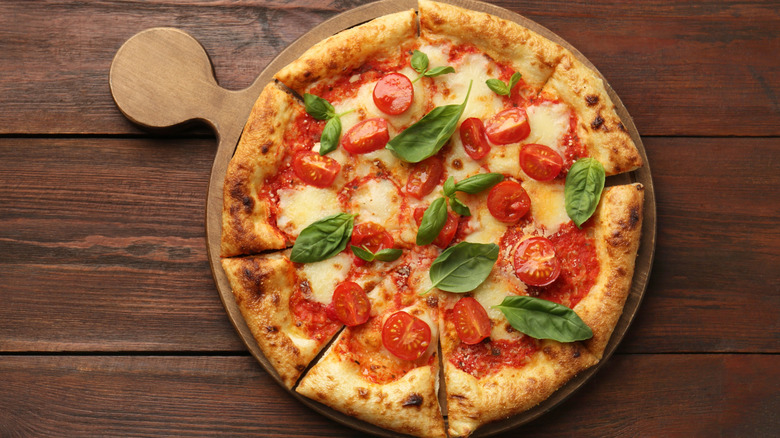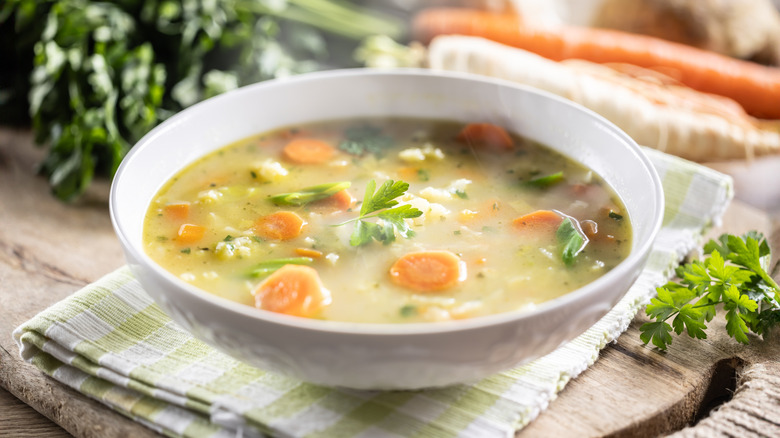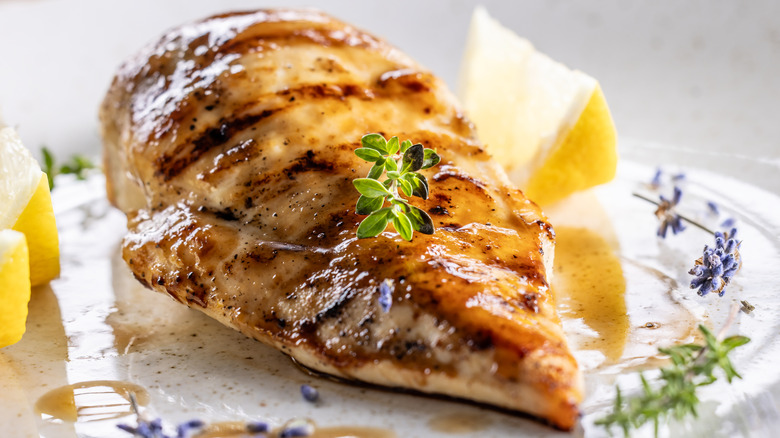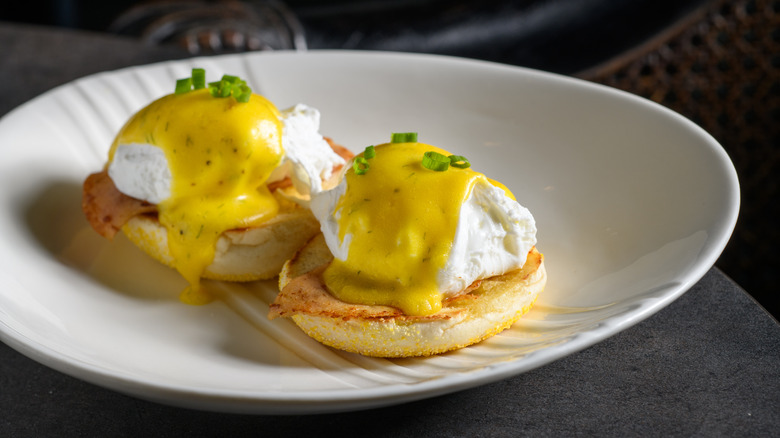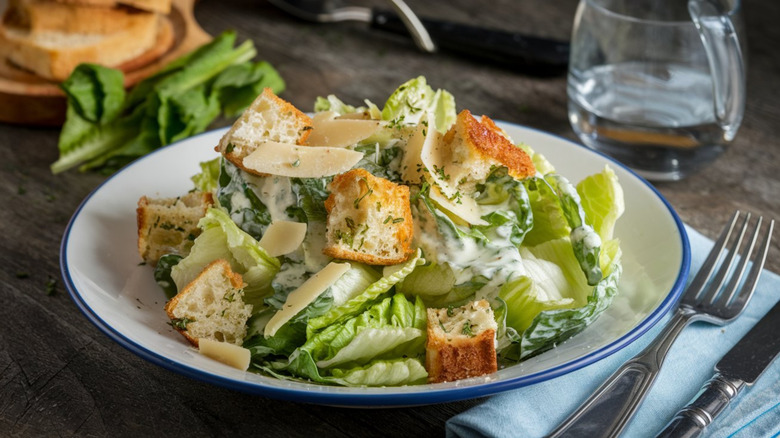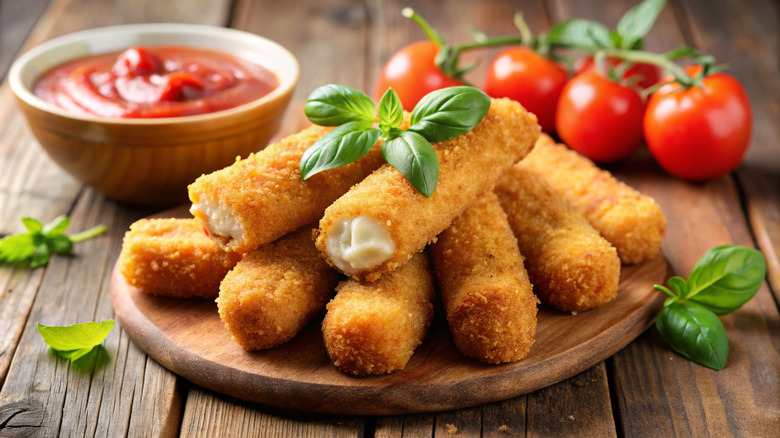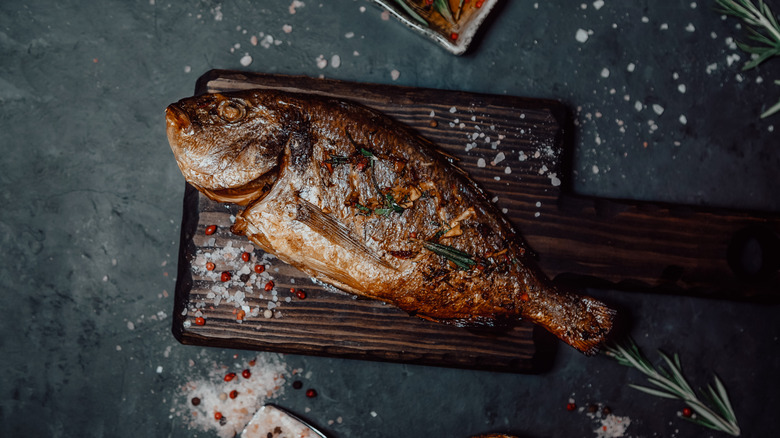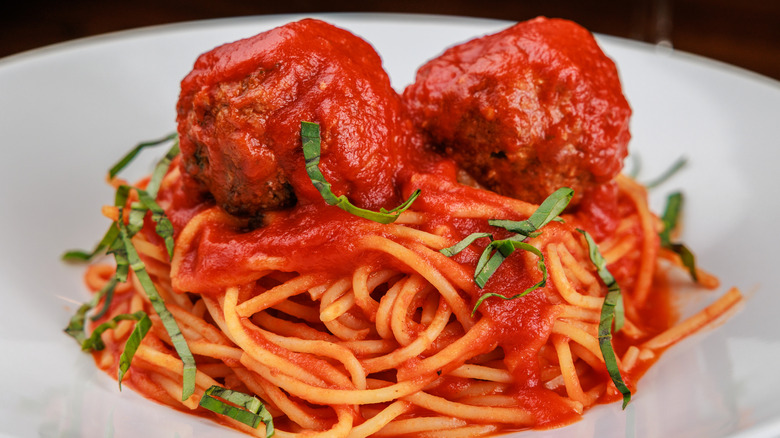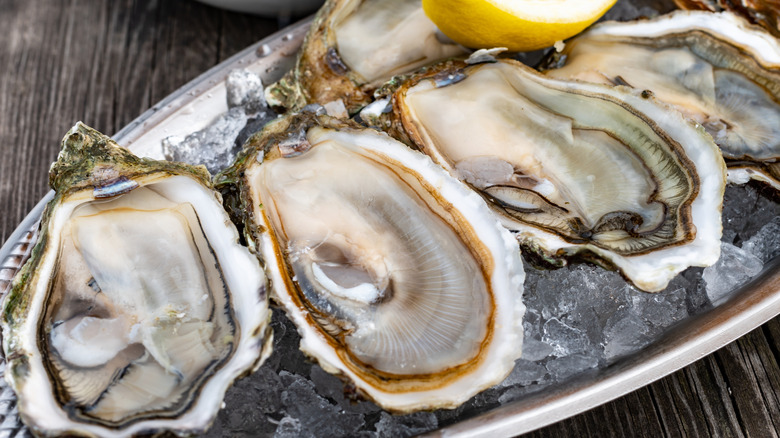10 Menu Items Chefs Won't Order At Restaurants
Who do you trust most in a restaurant? Probably the chef, right? When it comes down to it, the chef is the person who creates the most important part of your dining-out experience, which is of course the dish sitting in front of you. These people make food for a living, and it's fair to say that they have a pretty good understanding of the difference between a good and a bad meal. So, when they say that you shouldn't order something, it's pretty logical to trust them. They know what they're talking about, after all.
Which dishes would a chef typically avoid in a restaurant, though? The answers might be more surprising than you think. There are lots of foods that you shouldn't order in restaurants because of how long they take to make or how difficult they are, but what chefs tend to avoid are menu items that they know are more likely to be substandard, or else won't give you bang for your buck. This means that some all-time classics are actually often skipped over by chefs. Elsewhere, chefs will avoid ordering items that they know won't be fresh — and could potentially be hazardous to your health. Stick around to find out which dishes you should skip.
1. Margherita pizza
If you're in a good pizza restaurant, the margherita may well be the best thing on the menu. Margherita pizzas, in all their simplicity, allow the quality of the ingredients to shine through and give each individual flavor space to breathe. However, if you're eating in a joint that may not be spending top dollar on its ingredients, you're best to give this pizza a miss — for the sheer reason that you're falling prey to an obscene mark-up.
For chef Julia Helton, ordering the margherita is a huge error. "Stop paying for this dish," she states to Business Insider. "It's just dough, a little sauce, a few pieces of basil, and part of a log of mozzarella. You're paying $12 minimum for a dish that costs $1 to make." Helton points to her own experience as the executive chef in an Italian restaurant, so it may go to show that even the most traditional eateries can serve up margheritas that aren't worth it. Instead, you'd be far better off ordering pizzas which have ingredients you can't get anywhere else, or combine toppings in a way that you'd never thought to do. Go for something different, instead of ordering the same old thing.
2. Soup
How offensive can a humble bowl of soup be? Well, apparently, quite offensive — if you're Gordon Ramsay, that is. The famous chef is very clear about avoiding ordering the soup in a restaurant, namely because it can be a canny way for chefs to use up old ingredients. Plus, restaurants have a tendency to serve their soup of the day several days in a row. This is done to decrease food waste, but it can result in you ordering a fairly expensive dish that's neither special nor fresh.
Avoiding ordering soup is a sentiment shared by Jack Stein, Rick Stein Restaurants' chef director, to the Metro. "Personally, I think soup is better at home than at restaurants," he says. Soups in restaurants can often lack vibrancy, and instead lean too heavily into saltiness to give them flavor. Plus, they can be a little uncreative, which Stein says you can rectify easily at home. "For the best homemade soup, I love finding ingredients at the back of my cupboard and combining together," he states. Keep in mind, too, that soup is famously a pretty cheap meal to create, and you might be paying above the odds if you order it in a restaurant.
3. Chicken dishes
Do you know why chefs often refuse to order chicken when they eat out? It's because a lot of the time, it sucks. Now, this isn't a blanket rule, of course — and sometimes you can end up with a chicken dish that absolutely really hits the spot. However, most of the time you'll be given a plate of protein that's dry, handled poorly, totally tasteless, and just plain boring.
One of the most famous moments of chefs warning against ordering chicken was given by the late, great Anthony Bourdain, who stated in a 1999 New Yorker article that chicken is simply a chore for cooks to make. If your chef can't get passionate about it, do you honestly think the plate in front of you is gonna taste good? He's not the only one to recommend avoiding it, either. Other chefs find that chicken is frequently overcooked in restaurants, which can lead to it becoming tough, chewy, and just not worth the money that you're spending on it. We know that it's a safe option, but it can often be something you regret ordering. Be like Bourdain, and go for something more adventurous.
4. Eggs Benedict
Eggs Benedict is a brunch favorite, and one that every professional chef has likely had to tackle at some point in their career. The reason for this is that Eggs Benedict is so uniquely challenging to get just right. You have to balance toasting the muffin just right, poaching the egg to perfection without overcooking the yolk, and of course that all-important hollandaise sauce, which can split at the drop of a hat.
As a result, restaurants will either get this dish wrong, or the chefs in them will try and make a cheat's version. The hollandaise won't be fresh and may well be packaged, and the eggs will be rubbery or a little too neat. Unless you're dining in a place that specializes in this dish, it's best to avoid ordering it entirely.
Plus, Eggs Benedict can pose some unique health hazards that other brunch dishes may not. If hollandaise is left to sit at room temperature (as can often be the case), it can quickly become a host for bacteria which may end up causing food poisoning. Go for a dish where every element will be freshly cooked, to avoid any potential issues.
5. Salads
What's wrong with ordering a salad? Quite a lot, according to chefs. Not only can they often not be as fresh as you'd like (and if they've been sitting out for a while, they could be a breeding ground for bacteria), but salads are often highly overpriced for what they are, leading you to pay more for way less. "Rarely am I ever impressed with restaurant salads, and often leave thinking, 'I paid $15 for this; I could have made it in two seconds for much less than that,'" says Ping Pong Thai's Nina Swasdikiati via BuzzFeed. "You can make a Caesar salad at home with romaine lettuce, croutons, parmesan, and dressing for a fraction of the cost at a restaurant."
As well as this, salads in restaurants are often made with precooked ingredients, specifically proteins like chicken and eggs. However, this means that you're eating a dish constructed with elements that could have been prepared days in advance, and may therefore lack any vigor or vibrancy. We'd always recommend going for braised or stir-fried vegetable dishes instead, which justify their price somewhat by the technique involved in making them.
6. Mozzarella sticks
We know, we know. Everyone loves mozzarella sticks. Hey, we do too! However, if you're ever eating out with a chef, you'll never see them order these deep-fried delights. The reason? They're rarely made with love. Mozzarella sticks are one of those appetizers that's way easier to buy frozen than make from scratch — so most restaurants do just that. Not only does this mean that they're not fresh, but it also means that you're paying a lot of money for something that costs the restaurant very little. Plus, if you can cook a store-bought version of this frozen snack in your oven or air fryer in just a few minutes at home, why would you bother ordering it when you're eating out? Try something different instead.
There's also the fact that mozzarella sticks are arguably one of the heavier appetizers out there. Although they can be great as a snack with a couple of drinks, if you're ordering them before your entrée, you may well find that you're completely full by the time it arrives. You're far better off going for something lighter which you know has been made from scratch in the restaurant you're in.
7. Scrambled eggs
Scrambled eggs can feel like a safe choice in a restaurant. It's seemingly hard to go wrong with this all-time breakfast dish, and it can satisfy even the pickiest of eaters. Chefs, however, tend to steer well clear of scrambled eggs when they're eating out. The problem is that so many chefs just don't know how to make them properly. "This simple item is one that lots of chefs can't master, because they do not understand the flavor, or viscosity of eggs," says chef Felix Tai to Reader's Digest. "An overcooked, dried out egg is the worst sight ever, on a buffet line, or on a plate." Sadly, it often ends up that way.
It's worth saying this may not always be the chef's fault, though. If you're dining in a busy restaurant at peak breakfast time, it may simply be that your plate has sat on the side for too long. Perfect scrambled eggs need to be served pretty much immediately, otherwise they harden — and this is something that chefs know all too well. That being said, if you're eating in a first-class restaurant (and specifically one known for the quality of its eggs), you may be safe to order it. We wouldn't take the risk anywhere else, though.
8. The special
Ah, the special. The dish that has tricked so many people into ordering it, thinking that they're gonna get something out of this world and unique — only to find that the dish in front of them is far from fantastic. Chefs tend to avoid specials on the menu as they're all too aware that it's usually constructed of ingredients that the restaurant's about to throw out. This doesn't mean that they're unsafe to eat, of course, but it could leave you with a plate of food in front of you which feels a little flat and lacking in punch.
If the restaurant you're dining in has more than a couple specials, this is also a major red flag, as it indicates that they're taking a scattergun approach to their output and may not care that much about the menu. Plus, be wary of specials that always seem to be a permanent fixture on a menu. By their very nature, specials are limited-edition items that are meant to be gone by the end of the night. If the special is always there, then how special is it? It may just be a way for restaurants to charge more for less.
9. Spaghetti and meatballs
Now, we know that spaghetti and meatballs is one of those dishes that pleases pretty much everyone. However, what might surprise you is that it doesn't please chefs. This all-time fave is a dish that chefs tend to skip ordering, for the simple fact that a lot of restaurants really get it wrong — from their perspective, anyway.
Chefs understand that a good pasta dish requires just the right ratio of noodles to sauce, and that the pasta itself is an essential part of the meal that carries its own flavor. Unfortunately, a lot of restaurants fail to grasp this fact, and instead drown their pasta in copious amounts of sauce. This is particularly evident with spaghetti and meatballs, and you can end up having to shovel tablespoons of sauce into your mouth just to get to the pasta (and, indeed, the meatballs).
Unfortunately, this can also be an issue with other pasta dishes in restaurants, but spaghetti and meatballs tends to be the soupiest of them all. If you want a pasta meal where the noodles themselves stand out, go for options that skip the traditional sauces like carbonara, tomato, or alfredo. Opt for a pesto pasta or an aglio e olio, which both tend to be slightly drier.
10. Raw oysters
Chefs aren't the only people who recommend avoiding ordering raw oysters — most people who have a basic understanding of food safety do too. However, if you were in any doubt about whether you should opt for them, listen to the cooking pros. "Oysters — while delicious — can be a gamble," says chef Lyle McKnight to the Metro. "They can definitely make you ill if not super fresh and stored properly, and can also carry norovirus." Chef Mark Nichols is even more blunt about it. "If handled and stored incorrectly, raw oysters can kill you," he says to Reader's Digest. Do you need anything more than that to put you off?
It makes sense, then, to always opt for cooked oysters wherever possible. If the restaurant you're in only has raw ones, just go for something else on the menu. However, if you're completely set on ordering raw oysters, McKnight says that there are a few ways you can assess whether they'll be safe or not before you take the plunge. "Check the reputation of the restaurant for seafood and oysters before ordering, and always ask where they were caught and when to mitigate the risk."
